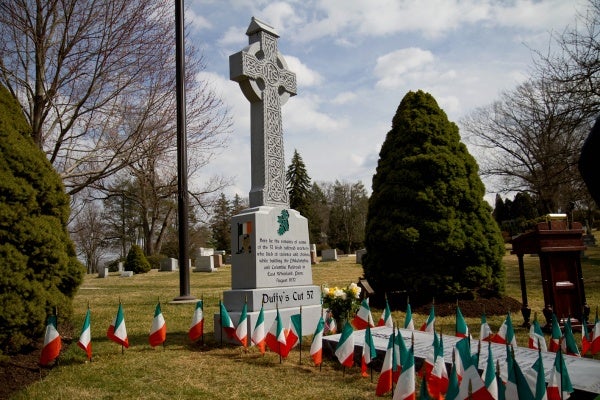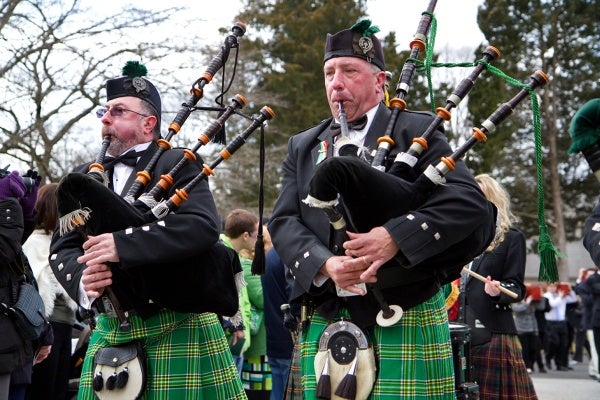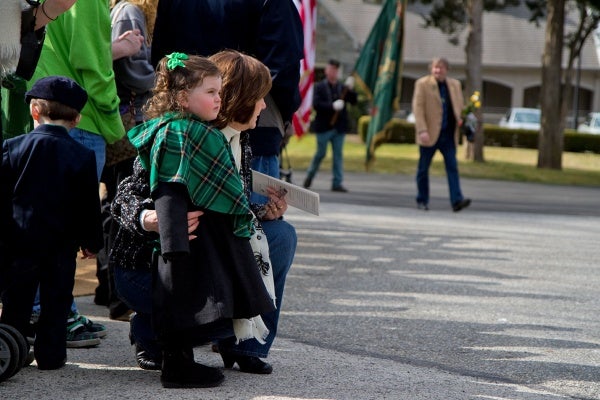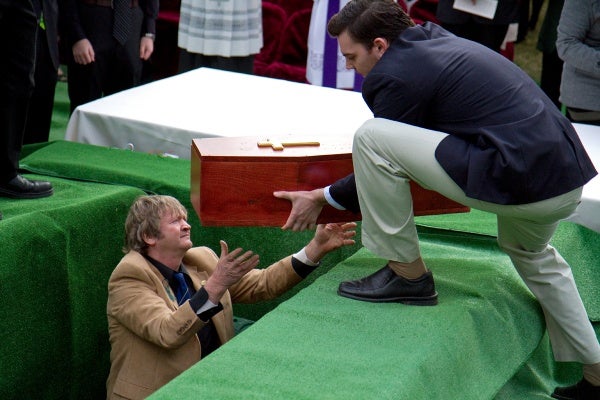Final lament for Irish immigrants treated roughly in life, death
Spring hasn’t yet sprung, but West Laurel Hill Cemetery turned green Friday.
About 300 mourners — almost all wearing the green of their Irish heritage — came to pay their final respects to five people, none known by name.
The remains of Irish immigrants who died while laying railroad track in 1832 near what is now the borough of Malvern finally have been put to rest. Their bones had been excavated from underneath a section of rail bed called Duffy’s Cut.
They likely died from cholera. At least a few were clearly murdered, perhaps by anti-Irish neighbors afraid of the spread of cholera. All 57 were buried in an unmarked, mass grave.
For the better part of a decade, Bill Watson, a professor of history at Immaculata University, has worked to uncover the lives of these forgotten people. He is directing the archaeological dig that produced the skeletal remains of six of the immigrants.
“We knew there was something common, and something rare,” said Watson, in traditional dress and carrying a bagpipe at the ceremony. “The common aspect — this is something that happened all over the country. But the fact that these men could be recovered, and their stories told — that’s rare.”
The workers were new immigrants, arriving from Ireland less than eight weeks before they died or were killed. From their bones, it’s known they lived hard, with poor diets and strenuous physical labor, ending up in an unmarked, mass grave.
One set of the remains excavated from Duffy’s Cut was identified as a John Ruddy. The remains will be returned to his home — County Donegal — for burial.
The other five unidentified sets of remains are now buried in Philadelphia in small pine caskets handmade by Bill Doran, the superintendent at West Laurel Hill Cemetery.
Letters that never came
“They came to Philadelphia and started work the next day, so they never had a chance to write home and say, ‘This is where I am,'” said Doran, an Irish immigrant himself. “For the mothers and fathers in Ireland, they were expecting a letter in the mail that never came. So their loved ones just fell off the face of the earth.”
The record of their life and death in America is spotty. In a somewhat fantastic series of events, the grandfather of Watson had worked for the Pennsylvania Railroad and left his heirs documents he had smuggled out of the now-defunct company’s archives. The documents included a record of the deceased workers.
Scientifically speaking, the bones are a rare look into early Industrial Revolution workers. There are few skeletal remains of those who built the American infrastructure. The bones were studied by Janet Monge, an anthropologist at the University of Pennsylvania.
She came to the funeral, but not for the pursuit of science.
“We all have some background in immigrant experience, that unified us as a group of people,” said Monge. “I’m Italian-American, there’s not so many Italians here. Italians mostly built bridges and worked with stones.
A word of thanks to ancestors
“But it’s all the same. It’s nice to be able to pay homage to those ancestors of ours that we never met, but would love to say a word to. Like, thanks,” she said.
The six unidentified workers were laid in a grave beneath a Celtic cross, their caskets sprinkled with dirt from Ireland. They are buried next to a memorial marker for the victims of 9/11.
This is not the end for Watson. He wants to continue to dig for the estimated 50 others still buried beneath the railroad tracks. However, the tracks are still actively used by Amtrak, and further excavation could damage the integrity of the rail bed.
And there are at least two more sites in Chester County where Watson says more laborers are buried.
WHYY is your source for fact-based, in-depth journalism and information. As a nonprofit organization, we rely on financial support from readers like you. Please give today.















